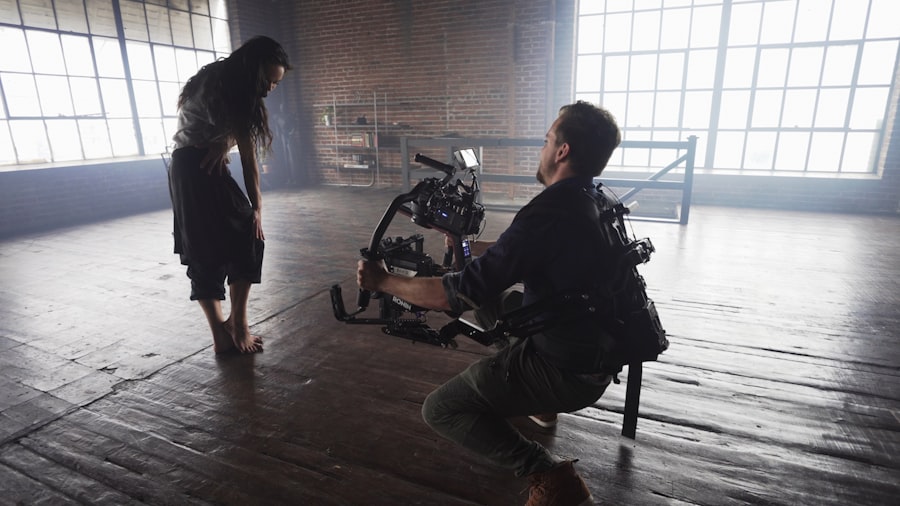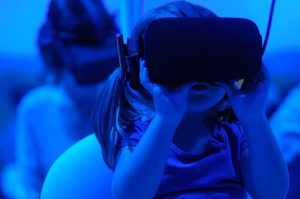Extended Reality (XR) technology, encompassing virtual reality (VR), augmented reality (AR), and mixed reality (MR), is revolutionizing various industries, with warehousing and supply chain management being at the forefront of this transformation. As businesses strive for greater efficiency and productivity, XR offers innovative solutions that enhance operational processes, improve training methodologies, and facilitate better communication among teams. The integration of XR into warehousing not only streamlines logistics but also provides a more immersive experience for employees, enabling them to visualize complex systems and workflows in a way that traditional methods cannot achieve.
This technological advancement is not merely a trend; it represents a fundamental shift in how warehouses operate, making them more adaptable to the ever-evolving demands of the market. The adoption of XR technology in warehousing is driven by the need for enhanced accuracy and speed in operations. With the rise of e-commerce and global supply chains, warehouses are under increasing pressure to optimize their processes.
XR tools can assist in inventory management, order picking, and even equipment maintenance by overlaying digital information onto the physical environment. This capability allows workers to access real-time data without diverting their attention from their tasks, thereby reducing errors and increasing efficiency. As organizations begin to recognize the potential of XR, they are investing in these technologies to gain a competitive edge, improve employee engagement, and ultimately deliver better service to their customers.
Key Takeaways
- XR technology is revolutionizing the warehousing and supply chain industry by providing immersive and interactive experiences.
- Virtual walkthroughs allow for efficient navigation of warehouses in a virtual environment, improving operational planning and decision-making.
- XR technology enhances training experiences by providing immersive learning environments, improving retention and skill development.
- Collaboration across global supply chains is made easier with XR, as teams can connect and work together in virtual spaces regardless of physical location.
- The benefits of XR in warehousing and supply chain management include improved efficiency, reduced costs, and enhanced safety and training experiences.
Virtual Walkthroughs: Navigating Warehouses in a Virtual Environment
Virtual walkthroughs represent one of the most compelling applications of XR technology in warehousing. By creating a digital twin of a warehouse, companies can simulate the physical space in a virtual environment, allowing users to navigate through it as if they were physically present. This capability is particularly beneficial for training new employees or for planning warehouse layouts without the need for physical alterations.
Users can familiarize themselves with the layout, understand the location of various items, and learn about safety protocols—all before stepping foot in the actual warehouse. This immersive experience not only accelerates the onboarding process but also enhances retention of information, as employees can visualize their tasks in a realistic setting. Moreover, virtual walkthroughs can be instrumental in optimizing warehouse operations.
By analyzing how employees interact with the virtual space, managers can identify bottlenecks or inefficiencies in workflows. For instance, if a particular area of the warehouse consistently causes delays during order picking, this can be addressed before it becomes a significant issue in real life. Additionally, virtual walkthroughs can facilitate collaboration among teams located in different geographical areas.
Stakeholders can participate in planning sessions or operational reviews without the need for travel, thus saving time and resources while fostering a more inclusive decision-making process.
Training Enhancement: Utilizing XR for Immersive Learning Experiences
The training of warehouse personnel is critical to maintaining operational efficiency and safety standards. Traditional training methods often rely on manuals or classroom-style instruction, which may not fully engage employees or provide them with hands-on experience. XR technology transforms this approach by offering immersive learning experiences that simulate real-world scenarios.
For example, using VR headsets, trainees can practice operating machinery or navigating complex inventory systems in a controlled environment where mistakes do not have real-world consequences. This hands-on experience not only boosts confidence but also enhances skill acquisition, as employees are more likely to remember what they have practiced in an interactive setting. Furthermore, XR training programs can be tailored to meet the specific needs of different roles within the warehouse.
For instance, a forklift operator may require different training modules compared to someone responsible for inventory management. By customizing these experiences, organizations can ensure that each employee receives relevant training that directly applies to their job functions. Additionally, XR technology allows for real-time feedback during training sessions, enabling trainers to assess performance and make immediate adjustments as needed.
This dynamic approach to training not only improves employee competency but also contributes to a safer work environment by ensuring that all personnel are well-prepared for their responsibilities.
Collaboration Across Global Supply Chains: Connecting Teams in Virtual Spaces
In today’s interconnected world, supply chains often span multiple countries and continents, making effective collaboration a challenge. XR technology offers innovative solutions to bridge these geographical gaps by creating virtual spaces where teams can meet and collaborate in real time. Through AR and VR platforms, employees from different locations can come together in a shared virtual environment to discuss projects, review inventory levels, or troubleshoot issues as if they were in the same room.
This level of connectivity fosters a sense of teamwork and collaboration that is often difficult to achieve through traditional communication methods such as emails or video calls. Moreover, XR facilitates more effective decision-making by providing teams with access to comprehensive data visualizations during meetings. For instance, stakeholders can view 3D models of products or warehouse layouts while discussing logistics strategies or inventory management practices.
This visual context enhances understanding and allows for more informed discussions about potential improvements or changes within the supply chain. As organizations continue to embrace remote work and global collaboration, XR technology will play an increasingly vital role in ensuring that teams remain connected and aligned toward common goals.
Benefits of XR in Warehousing and Supply Chain Management
The benefits of implementing XR technology in warehousing and supply chain management are manifold. One of the most significant advantages is increased operational efficiency. By utilizing AR for real-time data overlay during picking processes or employing VR for training simulations, organizations can reduce errors and streamline workflows.
This efficiency translates into faster order fulfillment times and improved customer satisfaction—key metrics that directly impact a company’s bottom line. Additionally, XR technologies can help optimize space utilization within warehouses by providing insights into layout effectiveness and inventory placement strategies. Another notable benefit is enhanced employee engagement and retention.
Traditional training methods can often lead to disengagement among workers who may find repetitive tasks monotonous or uninspiring. In contrast, immersive XR experiences captivate employees’ attention and encourage active participation in their learning processes. This engagement not only leads to better skill development but also fosters a culture of innovation within the organization as employees feel empowered to contribute ideas for improvement.
Furthermore, by investing in advanced technologies like XR, companies signal their commitment to employee development and modern workplace practices, which can enhance job satisfaction and reduce turnover rates.
Challenges and Considerations in Implementing XR Technology
Despite its numerous advantages, the implementation of XR technology in warehousing is not without challenges. One significant hurdle is the initial investment required for hardware and software development. While prices for XR devices have decreased over time, organizations still need to allocate substantial resources for purchasing equipment such as VR headsets or AR glasses, as well as developing custom applications tailored to their specific needs.
Additionally, integrating these technologies into existing systems may require further investment in IT infrastructure and training for staff members who will be responsible for managing these tools. Another consideration is the potential resistance from employees who may be hesitant to adopt new technologies. Change management is crucial when introducing XR into the workplace; organizations must ensure that employees understand the benefits of these tools and feel supported throughout the transition process.
Providing comprehensive training on how to use XR technologies effectively can help alleviate concerns and foster a positive attitude toward innovation. Furthermore, organizations should actively seek feedback from employees during implementation to identify any issues or areas for improvement early on, ensuring that the transition is as smooth as possible.
Case Studies: Successful Implementation of XR in Warehousing and Supply Chains
Several companies have successfully integrated XR technology into their warehousing operations, showcasing its transformative potential. For instance, DHL has implemented AR glasses for its warehouse workers to enhance picking accuracy and efficiency. By using AR overlays that guide employees through the picking process—highlighting item locations and providing real-time inventory updates—DHL has reported significant improvements in order fulfillment times and reduced error rates.
This case exemplifies how XR can streamline operations while simultaneously enhancing employee productivity. Another notable example is Walmart’s use of VR for employee training programs. The retail giant has developed immersive training modules that allow employees to practice various scenarios they may encounter on the job—from customer service interactions to emergency response situations—in a safe virtual environment.
This approach has not only improved employee preparedness but has also led to higher levels of confidence among staff members when dealing with real-life situations. These case studies illustrate that when implemented thoughtfully, XR technology can yield substantial benefits across various aspects of warehousing and supply chain management.
The Future of XR in Supply Chain Management: Potential Developments and Innovations
Looking ahead, the future of XR technology in supply chain management appears promising as advancements continue to emerge at a rapid pace. One potential development is the integration of artificial intelligence (AI) with XR tools to create even more sophisticated systems for inventory management and logistics optimization. For example, AI algorithms could analyze data collected from XR applications to predict demand trends or identify inefficiencies within warehouse operations—enabling organizations to make data-driven decisions that enhance overall performance.
Additionally, as 5G technology becomes more widespread, it will further enhance the capabilities of XR applications by providing faster data transmission speeds and lower latency. This advancement will enable real-time collaboration among teams across vast distances without compromising performance quality. As organizations continue to explore innovative ways to leverage XR technology within their supply chains, we can expect to see even more creative applications emerge—ranging from advanced predictive analytics tools to fully automated warehouses that utilize AR and VR for seamless operations.
The ongoing evolution of XR technology promises to reshape the landscape of warehousing and supply chain management for years to come.
For those interested in how extended reality (XR) technologies are revolutionizing warehouse operations, training, and collaboration in global supply chains, a related article worth exploring is on the advancements in inventory management systems. This article discusses the latest updates in software that can complement XR applications by enhancing the efficiency and accuracy of inventory tracking and management. You can read more about these technological integrations and their impact on supply chain operations by visiting this link.
FAQs
What is XR technology?
XR technology, which stands for extended reality, is an umbrella term that encompasses virtual reality (VR), augmented reality (AR), and mixed reality (MR). It combines the physical and digital worlds, allowing users to interact with virtual environments and objects.
How does XR enable virtual walkthroughs of warehouses?
XR technology allows users to create and experience immersive virtual environments that replicate real-world warehouses. This enables stakeholders to virtually walk through the warehouse, inspect layouts, and identify potential improvements without physically being present at the site.
How does XR improve training in the context of warehouses?
XR technology can be used to create interactive and realistic training simulations for warehouse operations. This allows employees to practice tasks, such as operating machinery or fulfilling orders, in a safe and controlled virtual environment, leading to improved training outcomes.
How does XR enhance collaboration across global supply chains?
XR technology enables real-time collaboration among stakeholders located in different parts of the world. By using XR-enabled virtual environments, teams can work together, visualize data, and make decisions as if they were in the same physical location, leading to improved communication and collaboration across global supply chains.


 Start using ZapInventory today
Start using ZapInventory today

